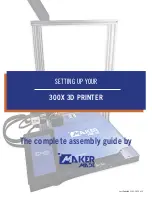
17
Label design guidelines
vary between printers; check the section for your specific printer] and pressures to 25 psi. Carefully test the stock to ensure
it functions satisfactorily with your printer.
Topcoats
Topcoats for non-paper labels may be either water based or solvent based. Avoid topcoats containing chemicals that emit
hazardous fumes when heated or exposed to pressure. Topcoats affect the print quality, feed reliability, and adhesion of
toner to the face sheet. Topcoats must be able to withstand temperatures up to 225°C (437°F) [temperatures vary between
printers; check the section for your specific printer] and pressures up to 25 psi for 100 milliseconds to prevent fuser
damage.
Water-based topcoats tend to be more conductive than solvent-based topcoats and are more difficult to fuse. With some
water-based topcoats and heavy liners, the fuse grade may fall below acceptable levels. Solvent-based topcoats tend to be
lower in conductivity than water-based topcoats. With some solvent-based topcoats, fuse grade is within acceptable levels
when heavier liners are used.
Print quality may degrade when using topcoats on labels with heavier liners. Using a lighter liner may reduce the
appearance of
splatter
. Test forms carefully with your printer to be sure the topcoat used performs acceptably for your
application.
Label design guidelines
Labels with a
stripped edge matrix
have the area around the outer edge of the cut sheet removed. Labels with a
total strip
matrix
have the unneeded portion of the die-cut stock around the labels (including a portion between the labels) removed to
make it easier to peel the labels from the backing.
Butt cut labels
are cut flush to one another, with no extra area between them. Avoid using butt cut labels without a stripped
edge matrix.
Die-cut labels
are cut with a non-print area between each label. For best results, do not print within 2.3 mm (0.090 in.) of
the edge of the label, of the perforations, or of the die-cuts of the label.
If you are using a butt cut or die-cut label, make sure adhesive contamination does not occur. Labels use varying levels and
types of adhesive, as well as a variety of liner materials and face stocks. Adhesive can ooze with all label stocks. Make
sure die-cuts are free of adhesive stringers. Zone coating or pattern adhesive with a 1 mm (0.04 in.) or larger non-adhesive
border provides the greatest protection from adhesive contamination.
If zone coating is not used, we recommend a stripped edge matrix. The stripped edge matrix varies with the type of face
stock, liner, and adhesive materials. See the following table for stripped edge matrix guidelines. Measurements may vary
±0.5 mm.
Stripped edge matrix guidelines
Face type
Total weight
of label
Edge matrix
removal
Location of strip
Paper
1
(Cut Sheet or
Dual Web)
140—180 g/m
2
1.6 mm (0.0625 in.)
1.6 mm (0.0625 in.)
215.9 mm (8.5 in.) at leading edge
279.4 mm (11.0 in.) at driver edge
Vinyl
265—300 g/m
2
3.0 mm (0.125 in.)
2
2.4 mm (0.094 in.)
215.9 mm (8.5 in.) at leading edge
279.4 mm (11.0 in.) at driver edge
Polyester
and other face
materials
Varies
3.0 mm (0.125 in.)
2
2.4 mm (0.094 in.)
215.9 mm (8.5 in.) at leading edge
279.4 mm (11.0 in.) at driver edge
1
Use a non-oozing adhesive.
2
Must be 1.6 mm (0.0625 in.) in some circumstances. See
Vinyl and polyester labels on page 21
.
















































